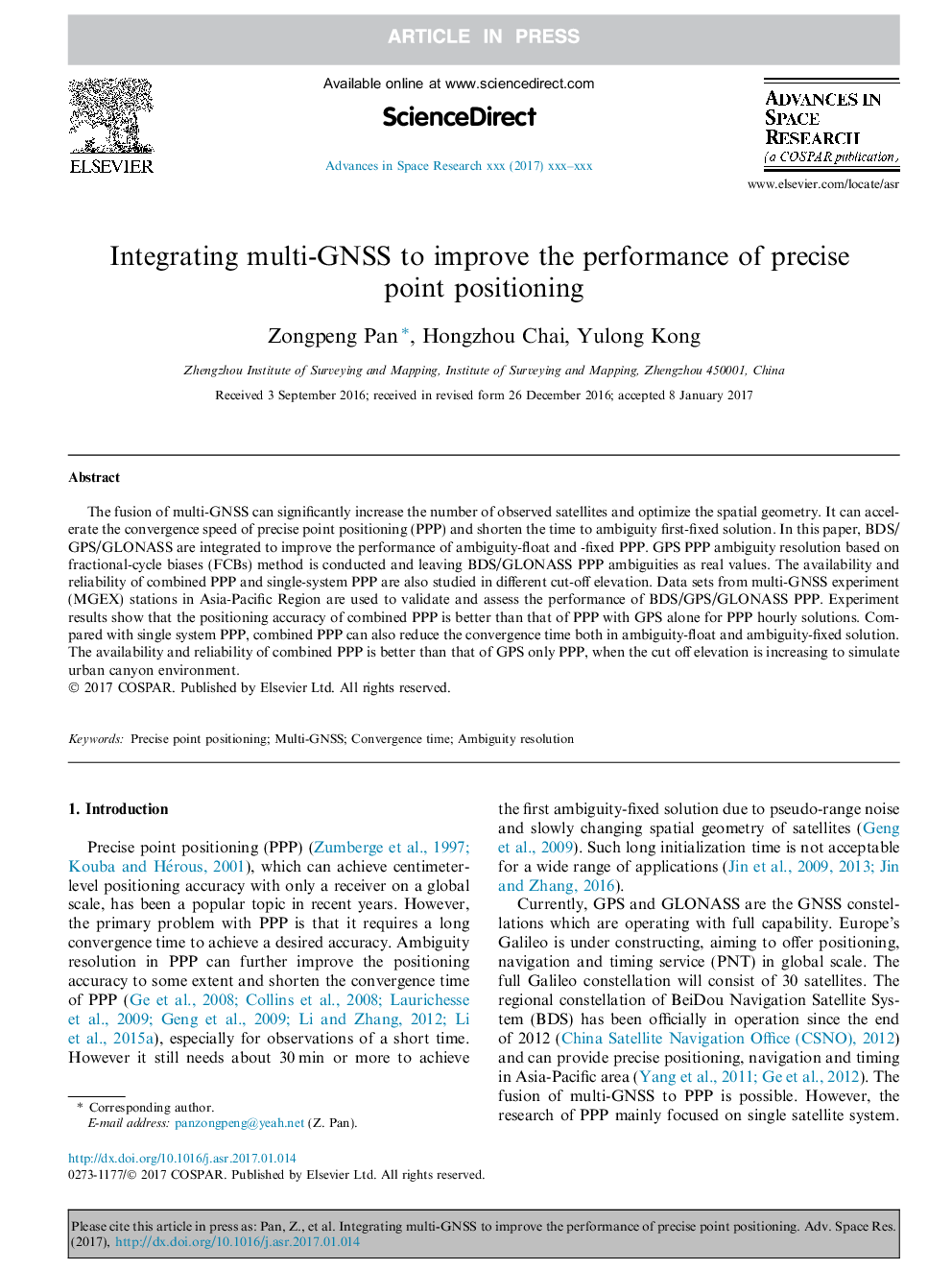| Article ID | Journal | Published Year | Pages | File Type |
|---|---|---|---|---|
| 8132509 | Advances in Space Research | 2017 | 11 Pages |
Abstract
The fusion of multi-GNSS can significantly increase the number of observed satellites and optimize the spatial geometry. It can accelerate the convergence speed of precise point positioning (PPP) and shorten the time to ambiguity first-fixed solution. In this paper, BDS/GPS/GLONASS are integrated to improve the performance of ambiguity-float and -fixed PPP. GPS PPP ambiguity resolution based on fractional-cycle biases (FCBs) method is conducted and leaving BDS/GLONASS PPP ambiguities as real values. The availability and reliability of combined PPP and single-system PPP are also studied in different cut-off elevation. Data sets from multi-GNSS experiment (MGEX) stations in Asia-Pacific Region are used to validate and assess the performance of BDS/GPS/GLONASS PPP. Experiment results show that the positioning accuracy of combined PPP is better than that of PPP with GPS alone for PPP hourly solutions. Compared with single system PPP, combined PPP can also reduce the convergence time both in ambiguity-float and ambiguity-fixed solution. The availability and reliability of combined PPP is better than that of GPS only PPP, when the cut off elevation is increasing to simulate urban canyon environment.
Related Topics
Physical Sciences and Engineering
Earth and Planetary Sciences
Space and Planetary Science
Authors
Zongpeng Pan, Hongzhou Chai, Yulong Kong,
